Disclosure: Many of the links below are affiliate links and we may receive a small commission for purchases made through these links. We highly recommend these products (as we use them ourselves!) and would greatly appreciate any use of the links. These small commissions help us with the continuation of our blog!
Are you ready for your legs to burn on this ultimate stair master workout? Koko Head trail is a popular short hike on Oahu, where you the steps are the remains of an old railway. It’s a steep way up and absolutely brutal to your legs! But like most hikes in Hawaii, the views on top will make this hike worth it. You will have a full panoramic view of the east side of the island, the crater, Hanauma bay and more. A perfect trail to hike while staying on Oahu! In this post, you will read everything you need to know to start hiking this trail!
General information
Distance: 1.4 mi / 2.3 km
Duration: about 2 hours
Classification: moderate
Elevation gain: 1200 ft / 366 m
Best time to hike: Year round. We recommend to hike the trail in the morning, as there is limited shade on the trail. Full sun exposure! It’s also a popular trail, so you will likely see many people.
Highlights of the trail
- Panoramic view of the eastern side of Oahu!
- View of Koko Crater, Diamond Head and Hanauma Bay
- Walking on a volcano!
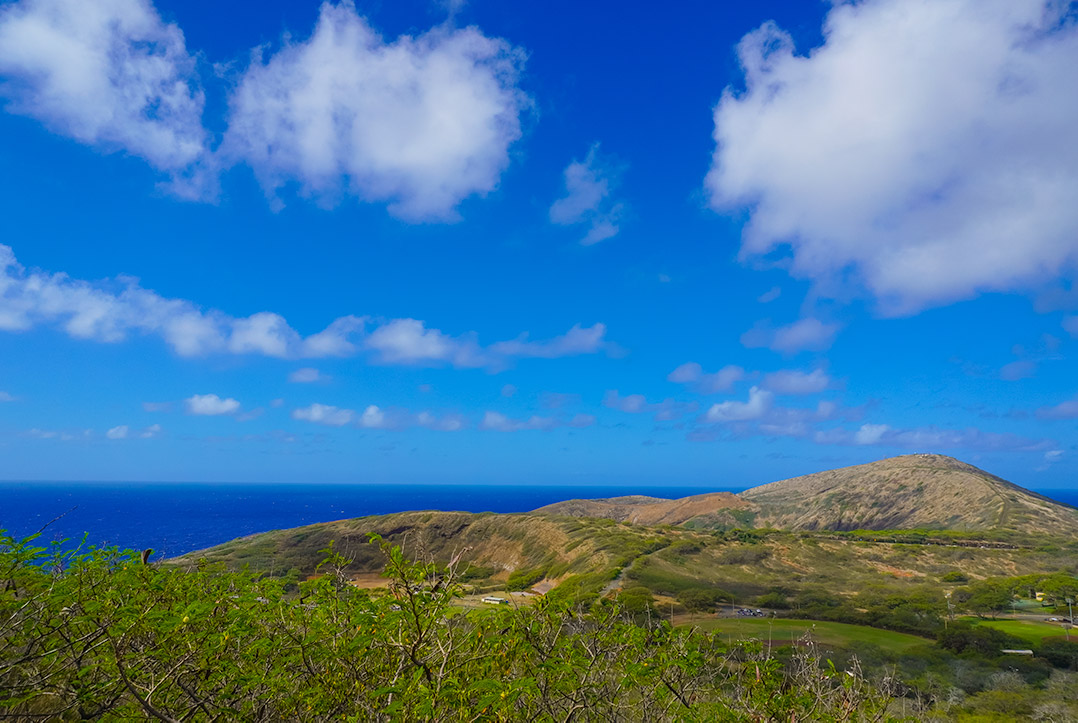
How to get to Koko Head Trail
Koko Head trail is easy to find on Google Maps. As you drive into Koko Head District Park on Anapalau St, you will find parking spots and restrooms. You can park your car where the restrooms are, or continue driving as you will find a second parking lot closer to the trail.
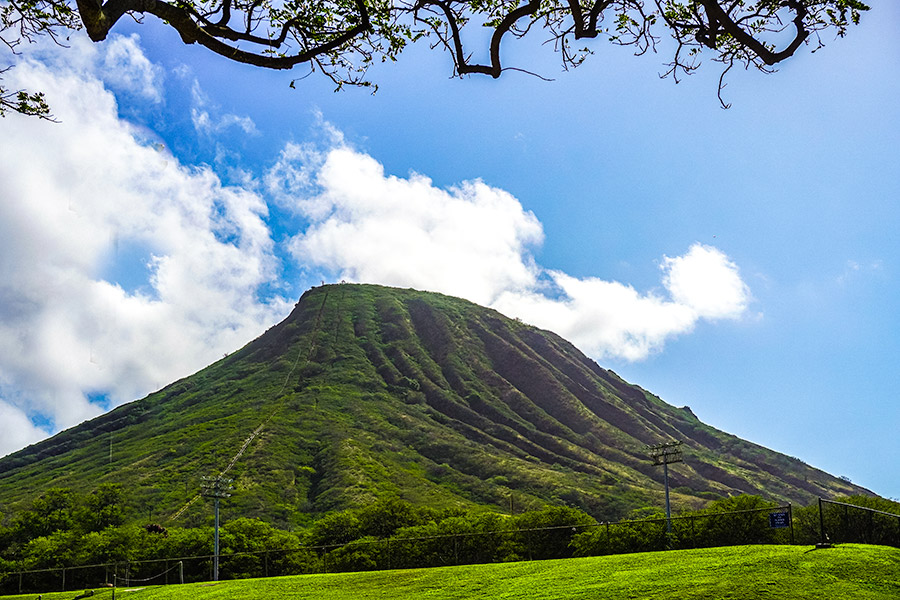
Interested in other hikes in Hawaii? Check out the famous stairway to heaven hike!
Walking to the start of the trail
After you parked your car, it’s a short walk to the start of Koko Head trail. Expect to walk roughly 100 yards or 90 m. The walk to the trail is pretty straightforward, as you can see the enormous mountain and the railway from the parking lot.
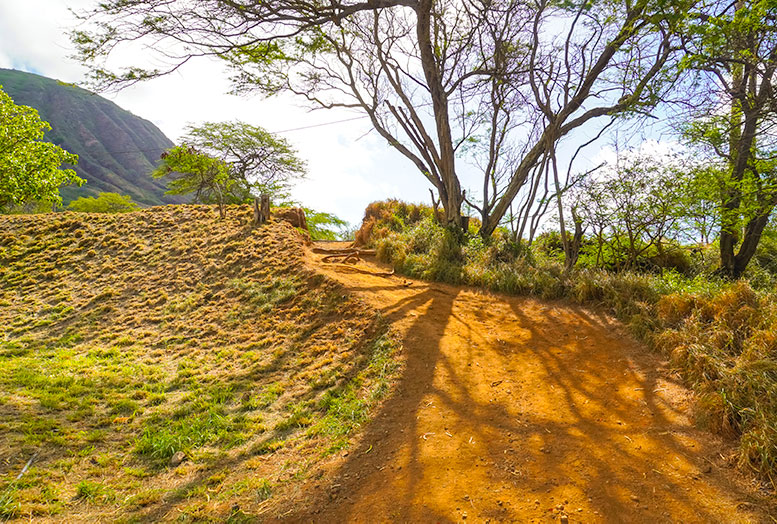
What to expect of hiking the Koko Head Trail
The start of the trail
You will immediately see the steps and notice how they are not maintained. The gaps in between steps can be large and some steps are halfway broken. There are plenty of opportunities to take a break. Just step to the side and stand or sit next to the railway steps. You’ll see plenty of people catch their breath, as it only gets steeper and steeper…

The middle part of the trail
Keep on walking and once you hit the middle of the trail, you will notice the ground underneath drop away. The railway steps will then act as a bridge, where you walk only on the steps. This can be a bit scary, as the gaps in between steps can be large.
No worries if this isn’t for you, there is another way you can take through the bushes. You will see a sign leading you the way.
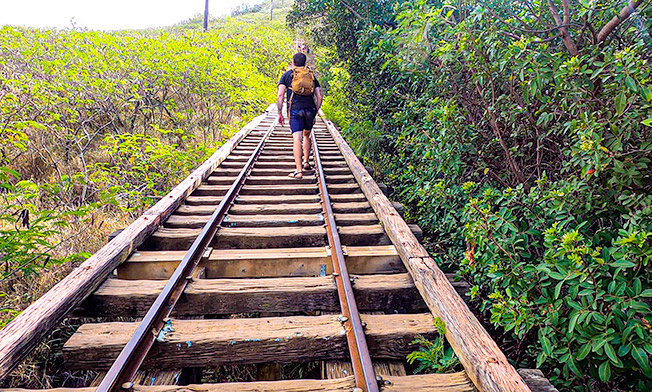
The final part of the trail
The final part of the hike is unforgiving. It becomes very steep and that’s when you feel the stair master workout. Your quads will be burning as you make your way to the top. The trail is exposed, so there is barely any shade to keep you cool. The steep way up and the sun exposure is what makes this trail hard!

Once you reach the top of the stairs, make a slight right and keep on walking. You will be rewarded with lots and lots of wind! Take in the panoramic views and look out for Hanauma Bay, Honolulu and Diamond Head.
Making your way back down
We thought that the trip back down would be easier… well, let’s say that that’s not the case! There will be parts where you might have to sit on your butt to get to the next step below you. The way down is also harder on your knees and you will have to make way for the people walking up the stairs.
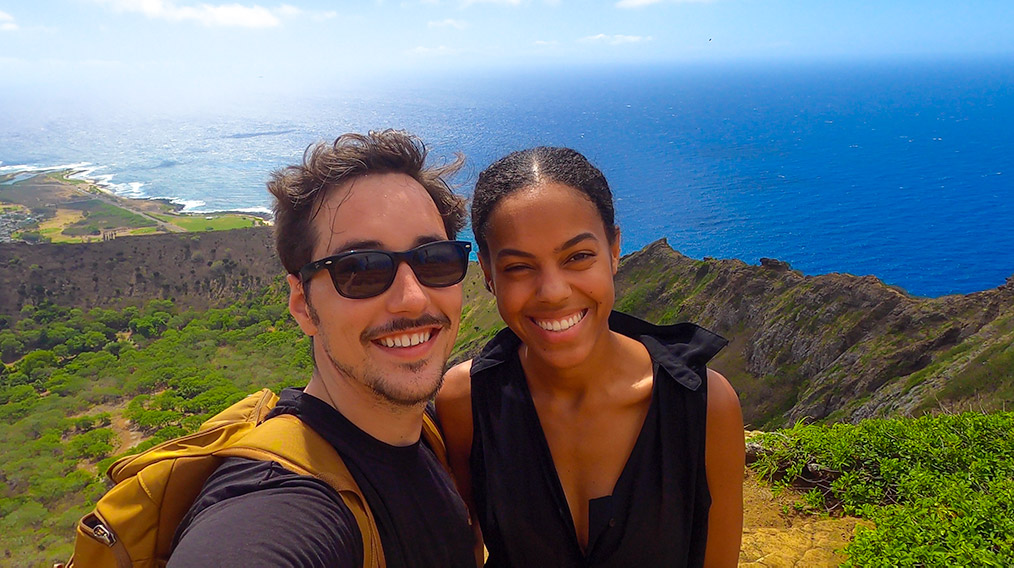
History of the Koko Head trail and crater
The railway station was used during WWII to transport people and supplies to and from the military bunkers at the top of Koko Crater. The railway was built somewhere between 1942 and 1943.
There used to be 1048 steps (or railway tracks), but now there are about 800 steps. This happened because of neglect, erosion and exposure to the elements.
The Koko crater is a volcano, but not active. Geological evidence indicates that the last eruption would have been about 7,000 years ago! Isn’t that cool?
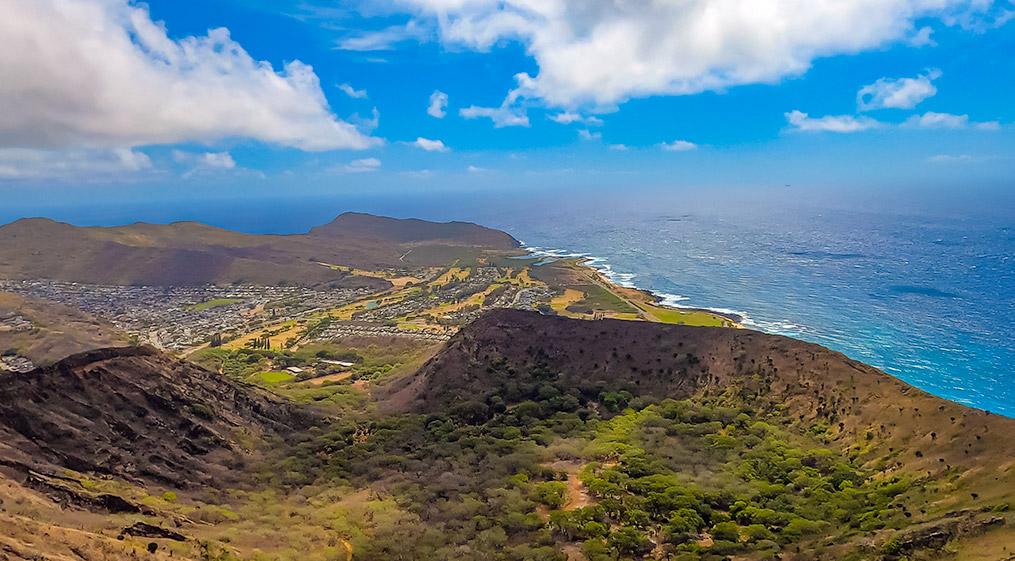
Koko Crater’s history according to the Hawaiian legend
Koko crater is also known as Kohelepelepe. Wait…what? Kohelepelepe means labia minor. In an old Hawaiian legend there is Pele, the goddess of the volcano. Pele was about to be attacked by Kamapua’a, the pig god. Pele had a sister, Kapo, who tried to save her by throwing her vagina to Koko Head to distract the pig god. Her ‘flying vagina’ formed the Koko crater.
What to bring on your hike
- Plenty of fluids! We brought 3 liters of water for the both of us.
- Food/snacks. We always bring some cliff bars, licorice and bananas.
- Sunscreen. There is lots of sun exposure on this trail!
- A light daypack.
Gear to wear on the Koko Head trail
- Good shoes… or not! We saw people hike (and run) the trail barefoot. So if that’s your thing, go for it!
- A hat to provide sun protection
- Airy and comfortable clothing. We wore shorts and short sleeved shirts.
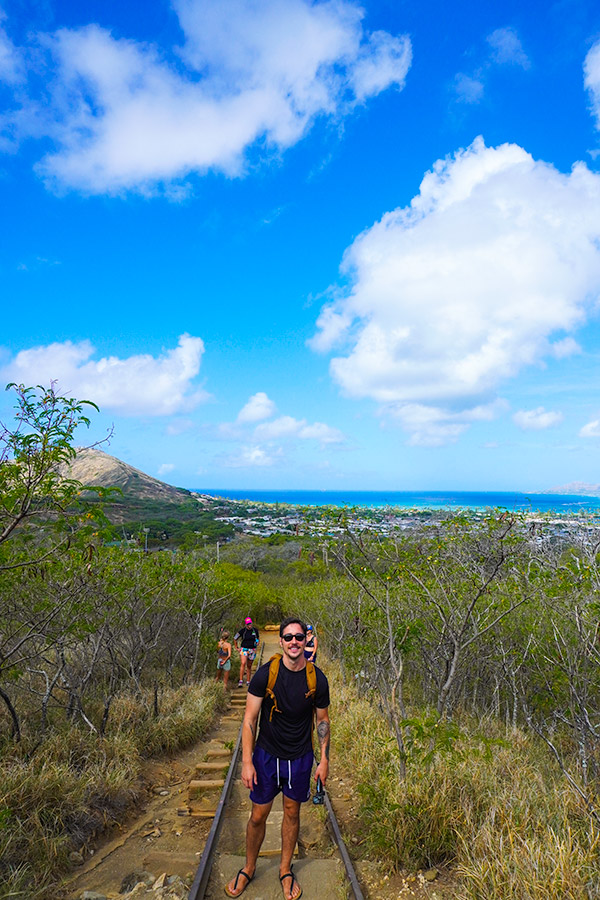
FAQ’s
Do I need to be fit to hike the Koko Head trail?
Yes! It is definitely recommended to be somewhat in shape when walking up these steps. The elevation, sun exposure and steep way up can be challenging.
How long does it take to hike the Koko Head trail?
Depending on your speed, anywhere between 1,5 hours to 3 hours.
How many steps up Koko Head?
About 800 steps, even though it used to be 1048 steps.
When did Koko Crater last erupt?
About 7,000 years ago according to the city of Honolulu.
Let yourself be heard!
Are you down to do this hike? Let us know your thoughts and comments!
You have used the wrong name for this trail. It is Koko Crater Trail that has the railroad ties and is tall. Koko Head, in which Hanauma Bay is located, is the shorter mountain ocean side of Koko Crater. You should correct your information.
You are right! They are two different mountains. I chose to use Koko Head in this post, because people use those terms in google to look up this hike (this way, people can find this post). Also, when you type Koko Head in Google Maps, it will lead you to the Koko Crater trail. As someone who knows Oahu very well (like yourself), I can understand how you immediately see the difference. But to the person who will visit Oahu, the term ‘Koko Head’ will lead them to the hike.